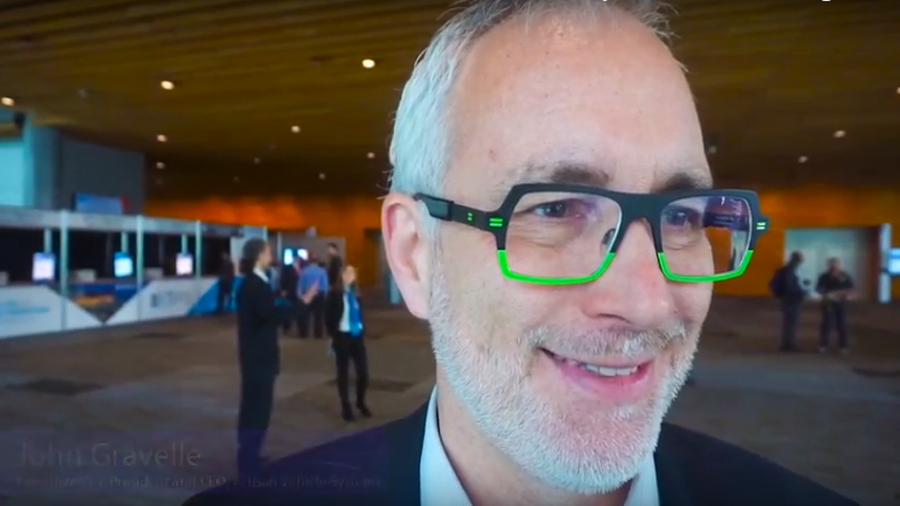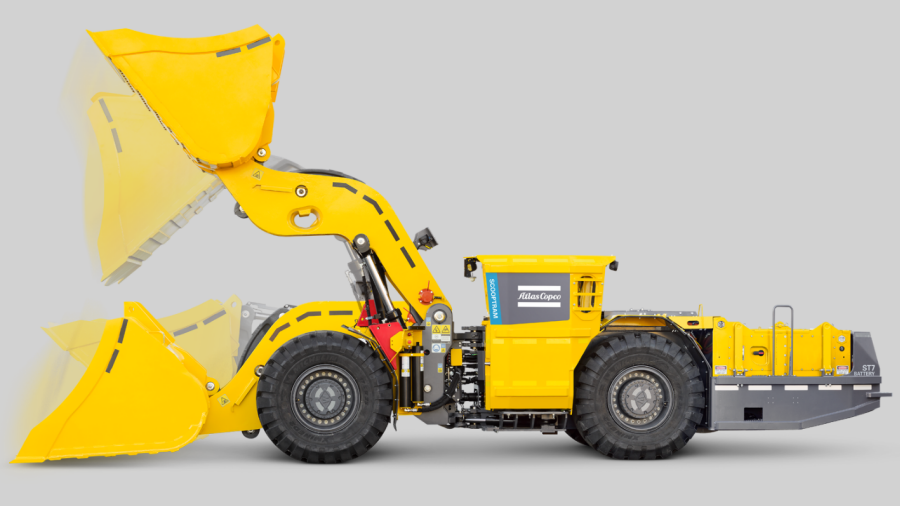
When an underground mine can reduce its ventilation costs by using battery-powered vehicles instead of diesel, the savings can be substantial says Artisan Vehicle System’s John Gravelle.
Artisan is a California-based company that specializes in making batteries for heavy equipment. Gravelle, who is executive vice president at Artisan, spoke to MINING.com at the CIM convention in Vancouver earlier this month. At the convention Atlas Copco unveiled its ST7 Scooptram with a battery and drivetrain supplied by Artisan.
Lower costs are changing the feasibility plans for some underground mines by meaningful amounts.
Gravelle’s question and answer with MINING.com has been edited for clarity.
MINING.com: Who are you?
John Gravelle: Hi, I am John Gravelle, Executive Vice President and Chief Financial Officer at Artisan Vehicle Systems.
MINING.com: What does Artisan do?
John Gravelle: Artisan makes complete electric power trains that are used in underground mining equipment. It’s been in business for 13 to 14 years. It makes the electric motors as well as all the power electronics, the battery packs and the charging systems.
MINING.com: Why are batteries important to miners?
John Gravelle: Well, we are looking at the mining industry, because battery technology has benefits that above ground users do not get—savings on ventilation costs. Ventilation costs are the biggest source of power costs for underground mines. They’re needed to run the fans for the cooling systems in order to get the diesel fumes out from under the ground for health and safety purposes. Those costs can be substantial, and we can significantly reduce those costs if we use electric-powered equipment underground.
MINING.com: What pieces of equipment would benefit from battery technology?
John Gravelle: By far the biggest source of diesel emissions underground is with the haul trucks and the scoops or LHD’s a some people call them.
MINING.com: So how is Artisan serving the mining industry right now? Is it partnering?
John Gravelle: We are working with the original equipment manufacturers, because we do not make the equipment ourselves. We are working with the original equipment manufacturers and bringing our systems—the electric motors, our battery packs—and partnering with the OEMs so they can deliver the scoops and the haul trucks to the mining industry. We are at the CIM event in Vancouver, and Atlas Copco is using our power trains and our full battery systems in their scoops. The ST7 is currently on display at this conference. Atlas Copco is also using our battery technology in their 20-tonne trucks. Three of those are in operation in hard-rock underground mines in northern Ontario. Artisan has designs for up to 50 tonne for haul trucks and 14 tonne for scoop trams and are ready to implement when the OEMs and mining companies are ready. [Editor’s note: see correction below.]
MINING.com: What are some limitations of battery technology?
John Gravelle: How far you can go between a charge. Now, lithium-based chemistries that are used in batteries have gone a long way to solving those issues. Battery packs can last a lot longer. For a lot of our scoops, we can go the full shift without having to change the batteries. They can just be charged in-between shift changes. But with a haul trucks—going up steep ramps heavily loaded—those batteries will need a swap during the shift at some point. It does take a little bit of time, about 15 minutes to swap the batteries. It does take time away from production, which is important but you can also put more equipment underground if you have electric because you are not producing the heat from the diesel fumes that will then need ventilation.

Artisan Vehicle Systems’ line of electric motors.
MINING.com: What do you see next with battery technology? Who else will you partner with?
John Gravelle: We would like to see battery technology used on bigger equipment. A lot of the mines are using 30-tonne, 40-tonne and 50-tonne haul trucks, even 60 and 80. So as mines get lower grades, they require bigger trucks. That’s going to need some help from the battery technology, especially for trucks at 50 tonnes. Those are going to need better battery technology that are more energy dense, that is being able to pack more energy into smaller areas. The issue with battery is that we need to fit the battery pack with where the diesel engine would otherwise be, so that’s the limit. We don’t have unlimited room for the battery cells. Batteries are going to get cheaper. They are going to get more efficient, so batteries will be able to power bigger pieces of equipment.
MINING.com: How fast is battery technology moving?
John Gravelle: Incredibly fast. We were approached by Kirkland Lake Gold in 2010 to see if we could put our lithium-based batteries into underground equipment. We got our first piece of equipment in 2011. We have been doing this now for about four years, and we have over 100,000 real production hours in underground hard rock. That experience is moving the industry forward quite substantially. Kirkland Lake Gold now has around 25 pieces of underground equipment, so you can see what’s happened in the last four years at Kirkland Lake Gold with them adopting this technology and allowing them to enjoy the savings in ventilation costs. It also allows them to get to adjacent ore bodies that they would not be able to get to as economically without the benefit of having electrical vehicles that reduce emissions underground. So that’s part of the future where this is going: it is going to allow cost-effective mining of adjacent ore bodies of expansions and that’s really where the savings are going to come from—capital cost savings on getting to these ore bodies.
MINING.com: Do you have any metrics showing cost savings with a reduction in tunnel and ventilation system usage?
John Gravelle: We worked on one proposal where the company had done a prefeasibility study on the project based on diesel. They then re-did the prefeasibility study based on electric. And that was quite telling as to what this technology can deliver. Now this mine had to be built, and it was a clean sheet of paper on to how they could build this ventilation system. What they were able to do was eliminate one of the airways, so they were going from four airways under diesel to three airways using electric. Those airways are very expensive to build. They were also able to eliminate one of their fans. These are the big surface fans that are again quite expensive. They were able to reduce the size of their cooling plant and all those costs in this particular example were around $50 million. That goes a long way to prove the economics of a mining project these days. That’s a real number. There will be operating costs savings on top of that since there will be a lot less power required. Your labour will be more efficient because it will not be as hot underground and not as hostile of an environment with the heat and the fumes from diesel.

Atlas Copco’s Scooptram ST7 is powered by Artisan Vehicle Systems’s battery.
Correction: The last sentence in the paragraph was changed. The video interview where John Gravelle discusses future designs was incorrect. The correct information has been added to the trasnscript.